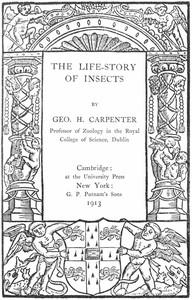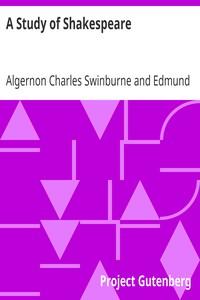|
|
Read this ebook for free! No credit card needed, absolutely nothing to pay.Words: 32636 in 17 pages
This is an ebook sharing website. You can read the uploaded ebooks for free here. No credit cards needed, nothing to pay. If you want to own a digital copy of the ebook, or want to read offline with your favorite ebook-reader, then you can choose to buy and download the ebook.

: The Life-Story of Insects by Carpenter George H George Herbert - Insects Development Animals-Wild-Insects; Biology@FreeBooksTue 06 Jun, 2023 CHAP. PAGE Outline Classification of Insects 122 Table of Geological Systems 123 Bibliography 124 Index 129 FIG PAGE 1. Stages of the Diamond-back Moth INTRODUCTION Among the manifold operations of living creatures few have more strongly impressed the casual observer or more deeply interested the thoughtful student than the transformations of insects. The schoolboy watches the tiny green caterpillars hatched from eggs laid on a cabbage leaf by the common white butterfly, or maybe rears successfully a batch of silkworms through the changes and chances of their lives, while the naturalist questions yet again the 'how' and 'why' of these common though wondrous life-stories, as he seeks to trace their course more fully than his predecessors knew. Such, in brief, is the course of the most familiar of insect life-stories. For the student of the animal world as a whole, this familiar transformation raises some startling problems, which have been suggestively treated by F. Brauer , L.C. Miall , J. Lubbock , R. Heymons , P. Deegener and other writers. To appreciate these problems is the first step towards learning the true meaning of the transformation. The dates in brackets after authors' names will facilitate reference to the Bibliography . The butterfly's egg is absolutely and relatively of large size, and contains a considerable amount of yolk. As a rule we find that young animals hatched from such eggs resemble their parents rather closely and pass through no marked changes during their lives. A chicken, a crocodile, a dogfish, a cuttlefish, and a spider afford well-known examples of this rule. Land-animals, generally, produce young which are miniature copies of themselves, for example horses, dogs, and other mammals, snails and slugs, scorpions and earthworms. On the other hand, metamorphosis among animals is associated with eggs of small size, with aquatic habit, and with relatively low zoological rank. The young of a starfish, for example, has hardly a character in common with its parent, while a marine segmented worm and an oyster, unlike enough when adult, develop from closely similar larval forms. If we take a class of animals, the Crustacea, nearly allied to insects, we find that its more lowly members, such as 'water-fleas' and barnacles, pass through far more striking changes than its higher groups, such as lobsters and woodlice. But among the Insects, a class of predominantly terrestrial and aerial creatures producing large eggs, the highest groups undergo, as we shall see, the most profound changes. The life-story of the butterfly, then, well-known as it may be, furnishes a puzzling exception to some wide-reaching generalisations concerning animal development. And the student of science often finds that an exception to some rule is the key to a problem of the highest interest. During many centuries naturalists have bent their energies to explain the difficulties presented by insect transformations. Aristotle, the first serious student of organised beings whose writings have been preserved for us, and William Harvey, the famous demonstrator of the mammalian blood circulation two thousand years later, agreed in regarding the pupa as a second egg. The egg laid by a butterfly had not, according to Harvey, enough store of food to provide for the building-up of a complex organism like the parent; only the imperfect larva could be produced from it. The larva was regarded as feeding voraciously for the purpose of acquiring a large store of nutritive material, after which 28 km. north of Ouargevert to the state of a second but far larger egg, the pupa, from which the winged insect could take origin. Others again, following de R?aumur , have speculated whether the development of pupa within larva, and of winged insect within pupa might not be explained as abnormal births. But a comparison of the transformation of butterflies with simpler insect life-stories will convince the enquirer that no such heroic theories as these are necessary. It will be realised that even the most profound transformation among insects can be explained as a special case of growth. Free books android app tbrJar TBR JAR Read Free books online gutenberg More posts by @FreeBooks
: Punch or the London Charivari Vol. 158 1920-02-11 by Various - English wit and humor Periodicals Punch@FreeBooksTue 06 Jun, 2023

: Tuomo sedän tupa by Stowe Harriet Beecher Friberg Maikki Editor - Slavery Fiction; Didactic fiction; Political fiction; Master and servant Fiction; African Americans Fiction; Southern States Fiction; Fugitive slaves Fiction; Plantation life Fiction; Uncle@FreeBooksTue 06 Jun, 2023
|
Terms of Use Stock Market News! © gutenberg.org.in2025 All Rights reserved.






